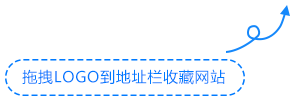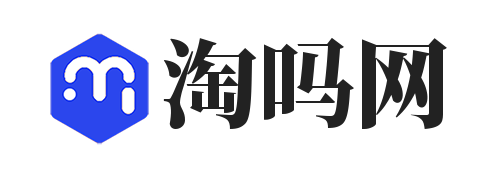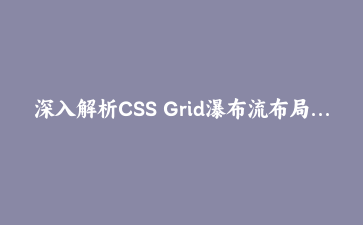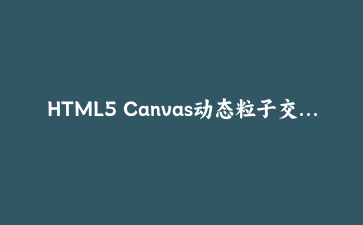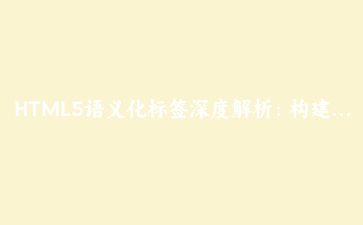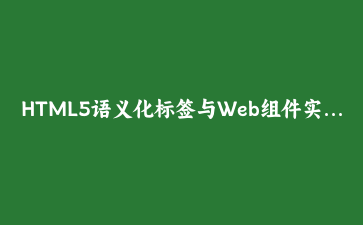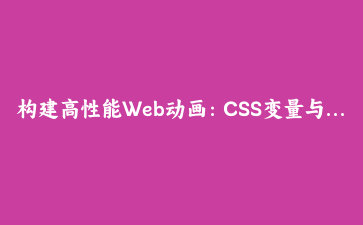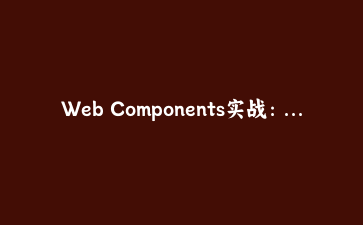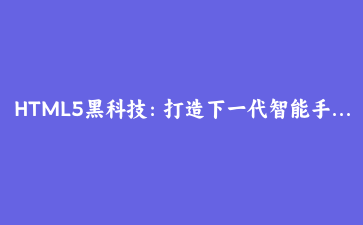一、Web Components技术概述
Web Components是一套不同的技术组合,允许您创建可重用的自定义元素,并在Web应用中使用它们。它主要由四项核心技术组成:
| 技术名称 | 主要功能 | 浏览器支持 |
|---|---|---|
| Custom Elements | 定义自定义HTML元素及其行为 | Chrome, Firefox, Safari, Edge |
| Shadow DOM | 封装样式和标记,实现组件隔离 | Chrome, Firefox, Safari, Edge |
| HTML Templates | 声明可复用的HTML模板片段 | 所有现代浏览器 |
| HTML Imports (已废弃) | 模块化导入HTML文档 | 不推荐使用 |
Web Components的优势
- 真正的封装:样式和行为不会影响外部文档
- 可复用性:一次开发,多处使用
- 框架无关:可在任何框架或原生JavaScript中使用
- 标准化:W3C标准,浏览器原生支持
二、自定义元素深度实践
2.1 自主自定义元素
// 定义自主自定义元素
class UserCard extends HTMLElement {
constructor() {
super();
this.attachShadow({ mode: 'open' });
// 定义组件模板
this.shadowRoot.innerHTML = `
<div class="user-card">
<img class="avatar" alt="用户头像">
<div class="user-info">
<h3 class="username"></h3>
<p class="email"></p>
<p class="bio"></p>
</div>
</div>
`;
}
// 定义可观察的属性
static get observedAttributes() {
return ['username', 'email', 'avatar', 'bio'];
}
// 属性变化回调
attributeChangedCallback(name, oldValue, newValue) {
if (oldValue !== newValue) {
this.updateContent();
}
}
// 组件首次插入DOM时调用
connectedCallback() {
this.updateContent();
this.addEventListeners();
}
updateContent() {
const avatar = this.shadowRoot.querySelector('.avatar');
const username = this.shadowRoot.querySelector('.username');
const email = this.shadowRoot.querySelector('.email');
const bio = this.shadowRoot.querySelector('.bio');
avatar.src = this.getAttribute('avatar') || '/default-avatar.png';
username.textContent = this.getAttribute('username') || '匿名用户';
email.textContent = this.getAttribute('email') || '未提供邮箱';
bio.textContent = this.getAttribute('bio') || '暂无个人简介';
}
addEventListeners() {
this.shadowRoot.querySelector('.user-card').addEventListener('click', () => {
this.dispatchEvent(new CustomEvent('user-card-click', {
detail: { username: this.getAttribute('username') },
bubbles: true
}));
});
}
}
// 注册自定义元素
customElements.define('user-card', UserCard);2.2 使用示例
<!-- 在HTML中使用自定义元素 -->
<user-card
username="张三"
email="zhangsan@example.com"
avatar="/avatars/zhangsan.jpg"
bio="前端开发工程师,专注于Web Components技术">
</user-card>
<user-card
username="李四"
email="lisi@example.com"
bio="UI设计师,热爱创造美观的用户界面">
</user-card>
<script>
// 监听自定义事件
document.addEventListener('user-card-click', (event) => {
console.log('用户卡片被点击:', event.detail.username);
});
</script>三、Shadow DOM深度封装
3.1 样式封装实战
class StyledButton extends HTMLElement {
constructor() {
super();
const shadow = this.attachShadow({ mode: 'open' });
// 创建样式
const style = document.createElement('style');
style.textContent = `
:host {
display: inline-block;
}
.button {
padding: 12px 24px;
border: none;
border-radius: 6px;
font-size: 16px;
font-weight: 500;
cursor: pointer;
transition: all 0.3s ease;
background: var(--button-bg, #007bff);
color: var(--button-color, white);
}
.button:hover {
transform: translateY(-2px);
box-shadow: 0 4px 12px rgba(0, 123, 255, 0.3);
}
.button:active {
transform: translateY(0);
}
.button:disabled {
opacity: 0.6;
cursor: not-allowed;
transform: none;
}
.button--primary {
--button-bg: #007bff;
}
.button--danger {
--button-bg: #dc3545;
}
.button--success {
--button-bg: #28a745;
}
`;
// 创建按钮元素
const button = document.createElement('button');
button.className = 'button';
button.innerHTML = '<slot>按钮</slot>';
shadow.appendChild(style);
shadow.appendChild(button);
}
connectedCallback() {
const variant = this.getAttribute('variant') || 'primary';
const button = this.shadowRoot.querySelector('.button');
button.classList.add(`button--${variant}`);
if (this.hasAttribute('disabled')) {
button.disabled = true;
}
}
}
customElements.define('styled-button', StyledButton);3.2 使用示例
<!-- 不同变体的按钮 -->
<styled-button variant="primary">主要按钮</styled-button>
<styled-button variant="danger">危险按钮</styled-button>
<styled-button variant="success">成功按钮</styled-button>
<styled-button disabled>禁用按钮</styled-button>
<!-- 外部样式不会影响组件内部 -->
<style>
/* 这个样式不会影响styled-button组件 */
button {
background: red !important; /* 不会生效 */
}
</style>四、模板与插槽高级应用
4.1 复杂组件模板设计
<template id="data-table-template">
<div class="data-table">
<header class="table-header">
<h2><slot name="title">数据表格</slot></h2>
<div class="table-actions">
<slot name="actions"></slot>
</div>
</header>
<div class="table-container">
<table>
<thead>
<tr>
<slot name="headers"></slot>
</tr>
</thead>
<tbody>
<slot name="rows"></slot>
</tbody>
</table>
</div>
<footer class="table-footer">
<slot name="footer">
<div class="pagination">
<button class="prev-btn">上一页</button>
<span class="page-info">第 1 页</span>
<button class="next-btn">下一页</button>
</div>
</slot>
</footer>
</div>
</template>
<script>
class DataTable extends HTMLElement {
constructor() {
super();
const template = document.getElementById('data-table-template');
const content = template.content.cloneNode(true);
const shadow = this.attachShadow({ mode: 'open' });
// 添加样式
const style = document.createElement('style');
style.textContent = this.getTableStyles();
shadow.appendChild(style);
shadow.appendChild(content);
}
getTableStyles() {
return `
.data-table {
border: 1px solid #e0e0e0;
border-radius: 8px;
overflow: hidden;
background: white;
}
.table-header {
padding: 16px 24px;
background: #f8f9fa;
border-bottom: 1px solid #e0e0e0;
display: flex;
justify-content: space-between;
align-items: center;
}
.table-header h2 {
margin: 0;
color: #333;
}
.table-container {
overflow-x: auto;
}
table {
width: 100%;
border-collapse: collapse;
}
th, td {
padding: 12px 16px;
text-align: left;
border-bottom: 1px solid #f0f0f0;
}
th {
background: #fafafa;
font-weight: 600;
color: #555;
}
.table-footer {
padding: 16px 24px;
background: #f8f9fa;
border-top: 1px solid #e0e0e0;
}
.pagination {
display: flex;
align-items: center;
gap: 12px;
}
`;
}
}
customElements.define('data-table', DataTable);
</script>4.2 插槽使用示例
<data-table>
<span slot="title">用户管理列表</span>
<div slot="actions">
<styled-button variant="primary">新增用户</styled-button>
<styled-button>导出数据</styled-button>
</div>
<tr slot="headers">
<th>ID</th>
<th>用户名</th>
<th>邮箱</th>
<th>操作</th>
</tr>
<tr slot="rows">
<td>1</td>
<td>张三</td>
<td>zhangsan@example.com</td>
<td>
<styled-button variant="danger">删除</styled-button>
</td>
</tr>
<div slot="footer">
<div class="custom-pagination">
<span>共 100 条记录</span>
<styled-button>刷新数据</styled-button>
</div>
</div>
</data-table>五、高级应用与最佳实践
5.1 组件生命周期管理
class AdvancedComponent extends HTMLElement {
constructor() {
super();
console.log('构造函数调用');
this.attachShadow({ mode: 'open' });
this.shadowRoot.innerHTML = `<div>高级组件</div>`;
}
// 元素首次插入DOM时调用
connectedCallback() {
console.log('组件已连接到DOM');
this.loadData();
this.setupResizeObserver();
}
// 元素从DOM移除时调用
disconnectedCallback() {
console.log('组件已从DOM断开');
this.cleanup();
}
// 元素移动到新文档时调用
adoptedCallback() {
console.log('组件已移动到新文档');
}
// 属性变化时调用
attributeChangedCallback(name, oldValue, newValue) {
console.log(`属性 ${name} 从 ${oldValue} 变为 ${newValue}`);
this.handleAttributeChange(name, newValue);
}
// 定义要观察的属性
static get observedAttributes() {
return ['data-source', 'theme', 'size'];
}
async loadData() {
const dataSource = this.getAttribute('data-source');
if (dataSource) {
try {
const response = await fetch(dataSource);
const data = await response.json();
this.renderData(data);
} catch (error) {
console.error('数据加载失败:', error);
}
}
}
setupResizeObserver() {
this.resizeObserver = new ResizeObserver(entries => {
for (let entry of entries) {
this.handleResize(entry.contentRect);
}
});
this.resizeObserver.observe(this);
}
handleResize(rect) {
// 处理尺寸变化
console.log('组件尺寸变化:', rect);
}
cleanup() {
if (this.resizeObserver) {
this.resizeObserver.disconnect();
}
}
handleAttributeChange(name, value) {
switch (name) {
case 'data-source':
this.loadData();
break;
case 'theme':
this.applyTheme(value);
break;
case 'size':
this.updateSize(value);
break;
}
}
applyTheme(theme) {
this.shadowRoot.host.setAttribute('data-theme', theme);
}
updateSize(size) {
this.shadowRoot.host.style.setProperty('--component-size', size);
}
}
customElements.define('advanced-component', AdvancedComponent);5.2 组件通信模式
// 自定义事件通信
class EventEmitterComponent extends HTMLElement {
constructor() {
super();
this.attachShadow({ mode: 'open' });
this.shadowRoot.innerHTML = `
<button id="emit-btn">触发事件</button>
<input id="message-input" type="text" placeholder="输入消息">
`;
}
connectedCallback() {
this.shadowRoot.getElementById('emit-btn').addEventListener('click', () => {
this.emitCustomEvent();
});
}
emitCustomEvent() {
const input = this.shadowRoot.getElementById('message-input');
const message = input.value || '默认消息';
// 分发自定义事件
this.dispatchEvent(new CustomEvent('component-message', {
detail: {
message: message,
timestamp: new Date().toISOString(),
component: this.tagName.toLowerCase()
},
bubbles: true,
composed: true // 允许事件跨越Shadow DOM边界
}));
}
}
customElements.define('event-emitter', EventEmitterComponent);
// 属性/方法通信
class DataProviderComponent extends HTMLElement {
constructor() {
super();
this._data = null;
this.attachShadow({ mode: 'open' });
}
// 公共方法
async fetchData(url) {
try {
const response = await fetch(url);
this._data = await response.json();
this.dispatchEvent(new CustomEvent('data-loaded', {
detail: this._data
}));
return this._data;
} catch (error) {
console.error('数据获取失败:', error);
throw error;
}
}
// Getter方法
get data() {
return this._data;
}
// Setter方法
set data(newData) {
this._data = newData;
this.render();
}
// 公共属性
set config(config) {
this._config = { ...this._config, ...config };
this.applyConfig();
}
}
customElements.define('data-provider', DataProviderComponent);5.3 最佳实践总结
- 命名规范:自定义元素名称必须包含连字符,避免与原生元素冲突
- 错误处理:在connectedCallback中处理可能的异常
- 性能优化:合理使用Shadow DOM的mode选项
- 可访问性:为自定义元素添加适当的ARIA属性
- 浏览器兼容:提供适当的polyfill或降级方案
